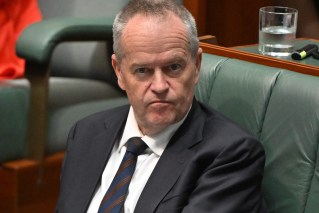Two more: Interest rate hikes could tip thousands more into mortgage stress
Interest rates are tipped to go yet higher next week as mortgage stress hits a 10-year high with a quarter of borrowers now “at risk”.


The Bank of Mum and Dad is facing its own financial problems
The expectation of a hike next week and another in April would push about 260,000 people into the “at risk” of mortgage stress category.
Economists also warned that the next increase from the Reserve Bank would be at a time when data was showing Australia’s economy was weakening.
However, the Commonwealth Bank’s head of Australian economics, Gareth Aird, said the bank would also have to move later this year to cut rates or risk unemployment hitting 5 per cent.
But it appears that even with weaker than expected economic growth figures this week, along with weaker inflation and horrible housing approvals, the inflation hawks remain in control at the RBA.
Lending for housing fell for the 12th consecutive month in January and ANZ has tipped a 10 per cent fall in house prices this year.
Some banks have already moved to increase some interest rates ahead of any announcements. The Commonweath Bank and the NAB lifted interest rates for some new customers as funding pressures emerged.
But a survey by Roy Morgan showed that about 1.19 million mortgage holders were at risk of mortgage stress before any further rate hike was considered. Although that was a 10 year high the number was still below the peak in numerical terms in 2009 of 1.45 million.
“The number of mortgage holders considered extremely at risk has now increased to 710,000, or 15.4 per cent, in the three months to January 2023, which is now slightly above the long term average over the past 15 years of 659,000,” Roy Morgan said.
The company said a rate hike next week would increase the number of “at risk” mortgage holders by 187,000 to 1.3 million. A second hike in April would lift it to 1.45 million.
Roy Morgan said if there was a sharp rise in unemployment during this period, mortgage stress would “rise precipitously towards the highest levels experienced during the Global Financial Crisis in 2007-08-09”.
“At that time a peak of 35.6 per cent of mortgage holders were considered ‘at risk’ in May 2008,” the polling company said.
People were considered at risk of mortgage stress if their repayments were greater than a certain percentage of household income. Extremely at risk was when the interest rate component of their repayments exceeded a certain level.
Figures released by the Australian Bureau of Statistics indicated that interest rates were having a massive impact on the home construction sector, but the Queensland unit market had surged to the highest level of approvals in six years.
The Master Builders chief executive Paul Bidwell said the unit numbers were extraordinary and would need more information from regional breakdowns before anything concrete could be determined.
“Conditions are still very challenging for delivering new housing,” he said.
However, the backlog in construction caused by supply chain issues was easing.
“There are still long time frames for construction as delays in materials and securing trades (workers) continues and this not expected to improve in the foreseeable future,” Bidwell said.
“The large need for new housing and a program of planned infrastructure projects across Queensland may even see that pushed out further.”












